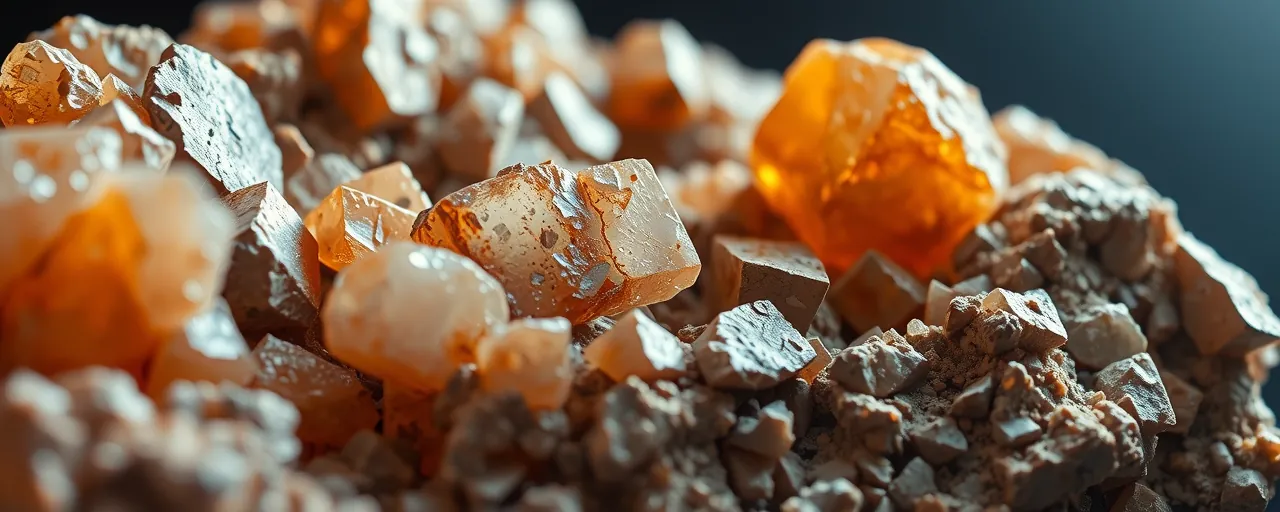A New Era for U.S. Mining
The United States is ramping up efforts to secure its supply of critical minerals, materials vital for everything from electric vehicle batteries to wind turbines. On May 2, 2025, the Federal Permitting Improvement Steering Council announced a fresh batch of mining projects added to the FAST-41 Federal Permitting Dashboard. These projects, ranging from the NorthMet copper mine in Minnesota to the Grassy Mountain gold mine in Oregon, reflect a broader push to boost domestic production of minerals like lithium, copper, and rare earths. The move comes as global demand for these resources skyrockets, driven by the clean energy transition and national security needs.
This initiative stems from an executive order signed by President Donald Trump, directing agencies to streamline approvals for mineral production. The goal is to reduce reliance on foreign supplies, particularly from China, which dominates global mineral processing. Yet, the effort isn’t just about speed. By placing these projects on the public-facing FAST-41 Dashboard, the government aims to make the permitting process more open, allowing everyone from industry leaders to local communities to track progress in real time. It’s a step toward accountability, but it also raises questions about balancing economic goals with environmental and social responsibilities.
Why Transparency Matters
The FAST-41 Dashboard, launched under 2015 legislation, serves as a digital hub for tracking federal permitting timelines. For the newly added mining projects, inclusion means their environmental reviews and authorization schedules are now publicly visible. Manisha Patel, the Permitting Council’s Acting Executive Director, emphasized that this openness fosters accountability, ensuring agencies stick to timelines and stakeholders stay informed. From project sponsors to community advocates, anyone can see where a project stands, whether it’s awaiting an environmental assessment or final approval.
This transparency is a double-edged sword. On one hand, it builds trust by demystifying a process often criticized as opaque and slow. Industry groups, like the National Mining Association, argue that clear timelines can attract investment and speed up projects that take, on average, nearly three decades from discovery to production in the U.S. On the other hand, public scrutiny could amplify concerns about environmental impacts or community displacement, especially for projects like the Roca Honda uranium mine in New Mexico, which has faced opposition from nearby Indigenous groups. The Dashboard doesn’t guarantee approval, but it ensures the process is out in the open.
The Stakes of Critical Minerals
Critical minerals are the backbone of modern technology and the clean energy transition. An electric vehicle requires six times more minerals than a gas-powered car, and a wind turbine needs nine times more than a traditional power plant. The International Energy Agency predicts that demand for lithium alone could surge 40-fold by 2040 if global climate goals are met. But supply chains are shaky. China controls 90% of rare earth processing and 60% of lithium refining, leaving the U.S. vulnerable to price spikes and export restrictions, as seen in recent Chinese curbs on gallium and rare earths.
To counter this, the U.S. is investing heavily in domestic mining and processing, backed by policies like the Inflation Reduction Act. Projects like the Stillwater Mine in Montana, now on the FAST-41 Dashboard, aim to bolster supplies of nickel and copper. Yet, global competition is fierce, and shortages are projected to persist beyond 2030. Partnerships with allies like Australia and Canada, alongside recycling and innovation, are part of the strategy, but mining remains the core focus. The challenge is ensuring this rush for resources doesn’t sacrifice long-term ecological or social well-being.
Environmental and Community Concerns
Speeding up mining permits has sparked debate. Environmental groups warn that slashing review times, as recent executive orders propose, risks overlooking impacts on water quality, wildlife, and cultural sites. For example, the Greens Creek Surface Exploration project in Alaska operates near sensitive marine ecosystems, raising fears of contamination. Advocates for thorough reviews argue that laws like the National Environmental Policy Act exist to protect communities and ecosystems from hasty decisions. They point to historical mining disasters, like toxic spills in Colorado’s Animas River, as cautionary tales.
Local and Indigenous communities, often near proposed mines, express similar worries. The Becky’s Mine Modification in Utah, another Dashboard project, has drawn scrutiny for potential water use in an already arid region. Environmental justice groups call for stronger public input and updated mining laws, like the 1872 Mining Act, to ensure cleanup and community consent. While industry leaders argue that modern technology can mitigate risks, opponents stress that cutting corners on reviews could leave lasting scars on landscapes and livelihoods.
Finding a Path Forward
The push for critical minerals highlights a delicate balancing act. Policymakers, industry, and communities agree that securing these resources is essential, but how it’s done matters. The FAST-41 Dashboard offers a tool to streamline processes while keeping them transparent, but it’s not a cure-all. Broader reforms, like those proposed in the Energy Permitting Reform Act, aim to modernize permitting without gutting protections. Ideas like digitizing reviews, boosting interagency coordination, and investing in recycling could ease tensions between speed and stewardship.
Ultimately, the success of these projects depends on trust. Transparency through tools like the Dashboard is a start, but meaningful engagement with communities, rigorous environmental standards, and a commitment to sustainable practices are just as crucial. As the U.S. navigates this mineral boom, the choices made today will shape not only its energy future but also the landscapes and lives tied to these resources. The world is watching, and the stakes couldn’t be higher.
